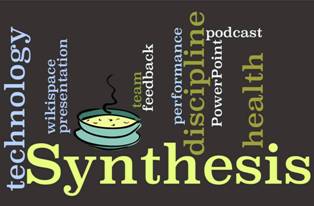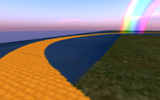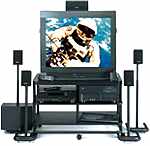In my role as “tech teacher” and “tech coordinator” at my school, I find myself faced with two broad challenges. First, I need to help my students develop technology literacy and use 21st century tools in appropriate, constructive, and creative ways; and second, I need to encourage and support the classroom teachers with integrating technology into their lesson plans in a way that will not only enhance their teaching methods but also provide opportunities for students to put into practice the tech literacy I am trying to develop. I have experienced some success with the first challenge, though I feel that there is far more to do than my 45-minutes a week with them will permit. In the second challenge, I feel I am somewhat of a failure. (There are also the unwritten challenges of unjamming printers and unblocking sites on the content filter and maintaining the website, etc., etc…but let’s not go THERE.)
Perhaps my expectations are too high but I fear that a number of my teachers see technology as a discipline that can work in isolation rather than one which can blend quite well into the curriculum to enhance the discipline(s) they teach. Though I have tried my best to refer to it as “tech class” as opposed to “computer class”, students are still told to line up for “computer” as I approach the door (and of course you can imagine how quickly they are all ushered out so the “prep time” may begin!). Well, if I am painfully honest, some of them see it as nothing more than another “special” along with art, or music, or Spanish. The ideal is for us to be working together and blending, dare I say, synthesizing, the elements of content matter and technology that will produce a desired outcome, or performance objective. There is time built into the schedule for us to meet, but often they are too busy and prefer to grade papers or work on some other task. I have done a number of interesting tech projects with my students that were based in a curriculum area, but the students fail to see it as a way to learn about the economy, or The Alamo, or the space program, as much as a “project for computer class”. It also is not given as much importance in their eyes because “it doesn’t affect my general average”. If I work with a teacher to develop a project, let’s say on an assigned South American country that calls for them to research and then share that information in a video format, I am still working with them on the project weeks and weeks after the class has moved from South America to Europe in the curriculum.
 There are a few minor success stories. One project completed with eighth grade last year allowed for developing skill in technology tools in the completion of a project based on the health curriculum. Mrs. C, our health and phys ed teacher, and I worked together and did extensive planning for this project. We did feel that we had accomplished our goals because we didn’t say, “Oh let’s not ever try this again!” On the contrary, we plan to do it again this year but fine-tune any weaknesses we encountered the first time. I will explain how we blended health subject matter and technology literacy in this project following Gardner’s four loosely ordered “components of synthesis” (the recipe for Synthesis Soup):
There are a few minor success stories. One project completed with eighth grade last year allowed for developing skill in technology tools in the completion of a project based on the health curriculum. Mrs. C, our health and phys ed teacher, and I worked together and did extensive planning for this project. We did feel that we had accomplished our goals because we didn’t say, “Oh let’s not ever try this again!” On the contrary, we plan to do it again this year but fine-tune any weaknesses we encountered the first time. I will explain how we blended health subject matter and technology literacy in this project following Gardner’s four loosely ordered “components of synthesis” (the recipe for Synthesis Soup):
1. A Goal – The goal was to provide a vehicle for eighth grade students to learn as much as possible about Risky Adolescent Behaviors for the purpose of helping them to make sensible choices as they encounter situations in their teen years.
2. A Starting Point – Students were presented in health class with the idea that they would be facing many choices in the future and they needed to learn as much as possible about the effects and consequences of their choices, even in areas they had not yet experienced. Since there were so many areas to be covered, they would work in groups to research their assigned topic and create a presentation by which they could share their findings with classmates, and eventually a wider audience, in order to help others make informed choices about risky behavior.
3. Selection of Strategy, Method, and Approach – Our strategy was using a team approach to be able to present as many topics as possible, and the following technology tools were brought into play:
wiki – The eighth grade class wikispace section on health was developed with an opening page explaining project goals, expectations, and due dates. A resource page was added with selected sites for each team to use for information in developing their project. I assisted in the setup and permissions on the wiki, and some of the coding. The health resources were gathered by Mrs. C. with tech resources added by myself. Each team then had its own page on the class wikispace that was setup for them as a table so that each expectation was clearly defined.
PowerPoint – The presentation was delivered in PowerPoint and techniques in developing a good PowerPoint presentation were explained in technology class. Expectations of quality were spelled out on a score sheet for the technology aspects of the project and links and tutorials were provided on the wikispace for reference.
Podcast – After the presentations were made in class, students then worked in their teams to turn their presentation into a dialogue that could be recorded as a podcast. In this way, the basic information was shared with a wider audience, while the in class presentation was visual and allowed for images that may have been copyrighted but cited in the presentation. This was a learning experience for me as well as the students, as it was my first time having students do podcasting. Previously I had only created them myself. The eighth grade podcasts are still available on our tech class blog on the right sidebar of the page.
4. Drafts and Feedback – Here I am not sure if I should analyze the feedback for student work or the feedback Mrs. C. and I gave each other as we discussed the strengths and weaknesses of the project. One thing we felt needed more emphasis next time was developing a more in-depth understanding of the project. Many times a team would have pulled a statement or a statistic from one of their sources, without fully understanding the context from which it was taken, or its significance in the overall picture of the risky behavior. I am not yet sure how we will deal with this issue this year. Students will not ask for help if they think they “get it”, but it may not be obvious until the final piece is presented that they didn’t really “get it”. So we must then step in and use the teachable moment. We also need to place more emphasis on oral presentation techniques. So I suppose our first year project was a “draft”, and hopefully this year’s students will benefit from our learning. We indeed learned along with them throughout the course of the project. Another area we hope to refine is being able to define for them our ideas of “excellent, adequate, and unacceptable” work on this project. We seemed to be more re-active than pro-active in this regard.
Will they be able to apply the best practices for presentation we tried to develop in other work they do in high school? We might never know if those skills carry over. More importantly though, have we given them the opportunity to develop their knowledge of risky adolescent behaviors so that in the future they do not become like some of the victims presented on their slides? Again, we may never know but, we can hope.
Note: Should anyone in the Wilkes Digital Media course wish to have guest access to our private eighth grade wikispace, that can be arranged. Feel free to contact me.
-Image created with Wordle and Microsoft Clip Art
 There are a few minor success stories. One project completed with eighth grade last year allowed for developing skill in technology tools in the completion of a project based on the health curriculum. Mrs. C, our health and phys ed teacher, and I worked together and did extensive planning for this project. We did feel that we had accomplished our goals because we didn’t say, “Oh let’s not ever try this again!” On the contrary, we plan to do it again this year but fine-tune any weaknesses we encountered the first time. I will explain how we blended health subject matter and technology literacy in this project following Gardner’s four loosely ordered “components of synthesis” (the recipe for Synthesis Soup):
There are a few minor success stories. One project completed with eighth grade last year allowed for developing skill in technology tools in the completion of a project based on the health curriculum. Mrs. C, our health and phys ed teacher, and I worked together and did extensive planning for this project. We did feel that we had accomplished our goals because we didn’t say, “Oh let’s not ever try this again!” On the contrary, we plan to do it again this year but fine-tune any weaknesses we encountered the first time. I will explain how we blended health subject matter and technology literacy in this project following Gardner’s four loosely ordered “components of synthesis” (the recipe for Synthesis Soup): Is there an Emerald City of education where all these concerns can be resolved? If Gardner had a visiting superintendent who wanted to see examples of such-and-such because that is where you should be in the social studies curriculum, but instead he as the teacher had done a very in-depth project that took several weeks, how would he respond to the question? Does this say to us that there needs to be a revolution in thinking “at the top”? We educators have brains, and heart, and (for the most part) we ARE striving to create life-long learners. We need to gather up our courage and creativity and keep trying to do what will allow our students to “come to enjoy the process of learning about the world” and see learning as a joy rather than a chore. Perhaps we can see Emerald City in the distance, but the yellow brick road sure has a lot of bumps along the way.
Is there an Emerald City of education where all these concerns can be resolved? If Gardner had a visiting superintendent who wanted to see examples of such-and-such because that is where you should be in the social studies curriculum, but instead he as the teacher had done a very in-depth project that took several weeks, how would he respond to the question? Does this say to us that there needs to be a revolution in thinking “at the top”? We educators have brains, and heart, and (for the most part) we ARE striving to create life-long learners. We need to gather up our courage and creativity and keep trying to do what will allow our students to “come to enjoy the process of learning about the world” and see learning as a joy rather than a chore. Perhaps we can see Emerald City in the distance, but the yellow brick road sure has a lot of bumps along the way.
 wonderful to be able to share ideas and practices, to learn new things together, and sometimes just commiserate. I have become especially active in the
wonderful to be able to share ideas and practices, to learn new things together, and sometimes just commiserate. I have become especially active in the